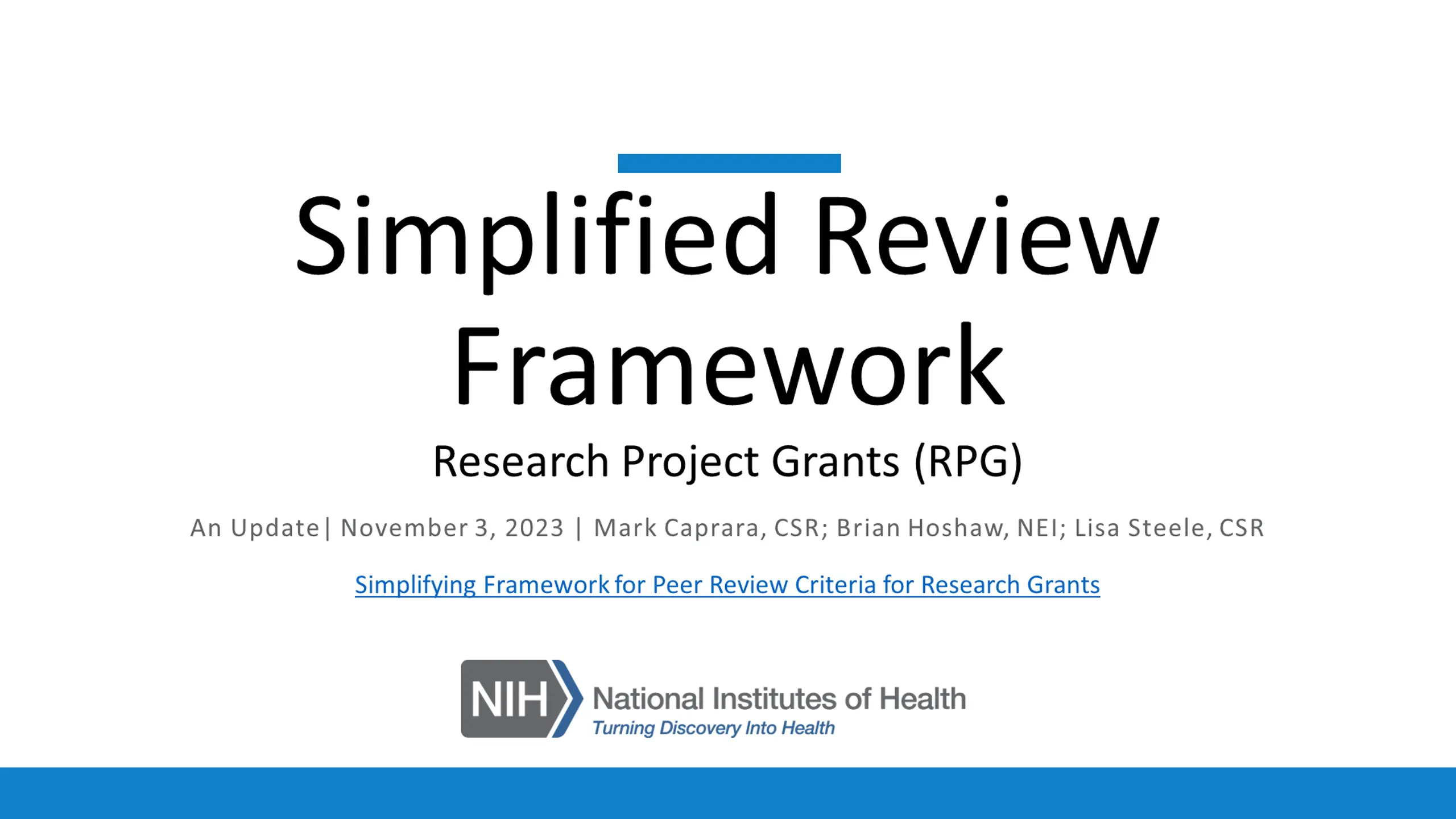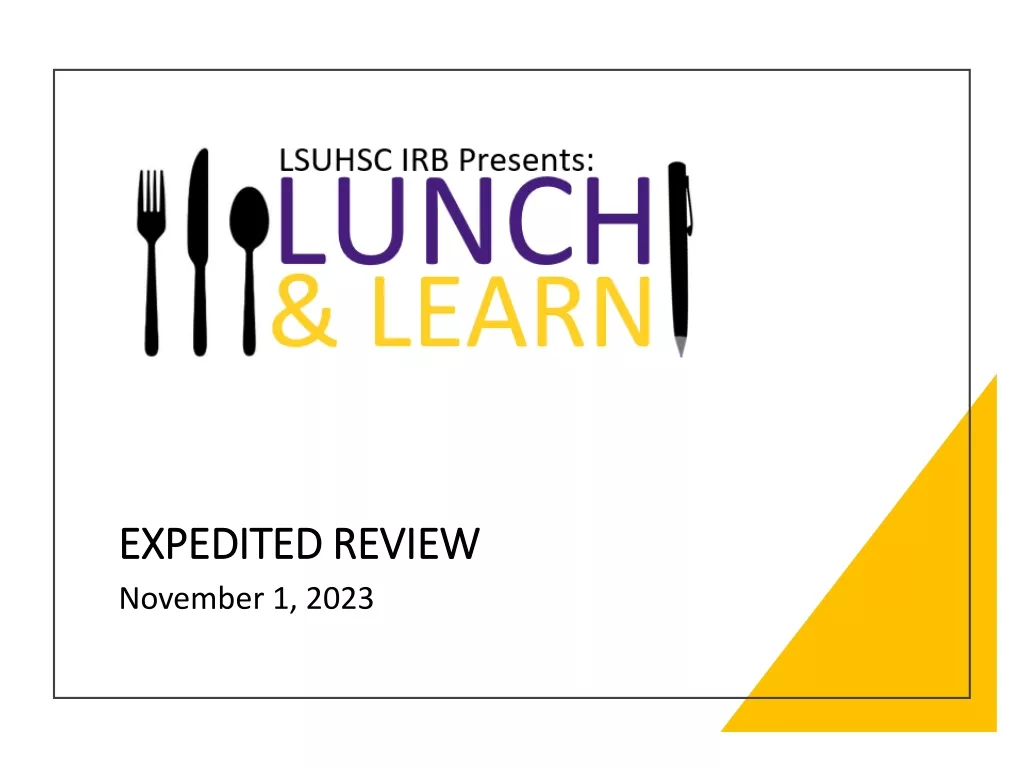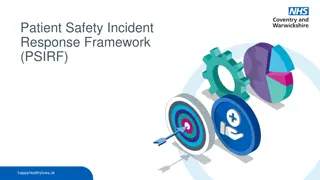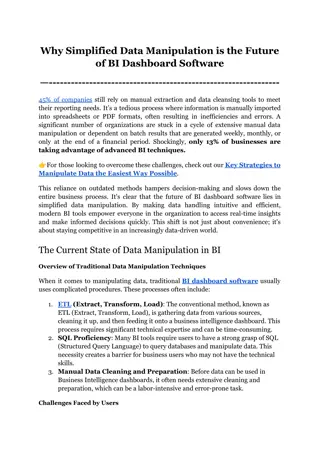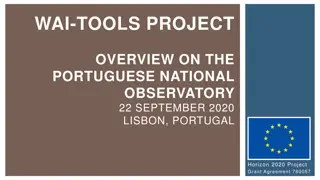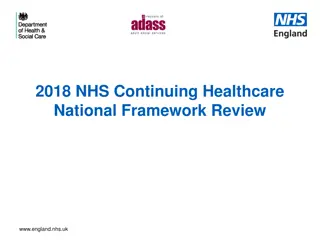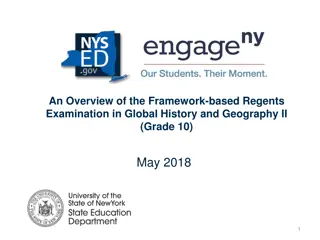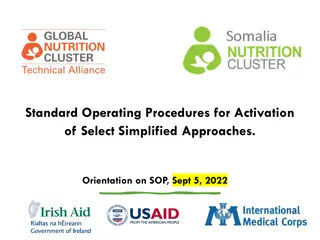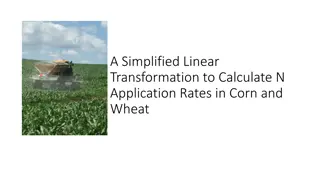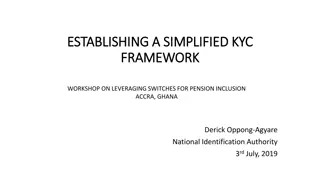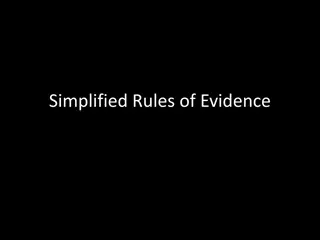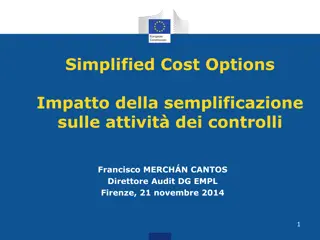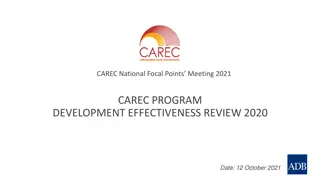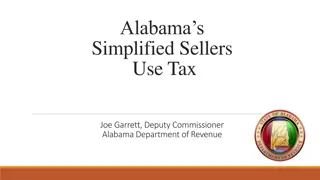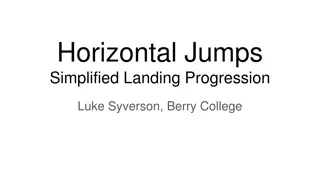Simplified Review Framework
Simplified review framework for peer review criteria in research project grants, aimed at improving the evaluation process for peer reviewers. The framework will address concerns raised by the extramural community regarding increased complexity and administrative burden in NIH's peer review criteria.
Download Presentation

Please find below an Image/Link to download the presentation.
The content on the website is provided AS IS for your information and personal use only. It may not be sold, licensed, or shared on other websites without obtaining consent from the author.If you encounter any issues during the download, it is possible that the publisher has removed the file from their server.
You are allowed to download the files provided on this website for personal or commercial use, subject to the condition that they are used lawfully. All files are the property of their respective owners.
The content on the website is provided AS IS for your information and personal use only. It may not be sold, licensed, or shared on other websites without obtaining consent from the author.
E N D
Presentation Transcript
Simplified Review Framework Research Project Grants (RPG) An Update| November 3, 2023 | Mark Caprara, CSR; Brian Hoshaw, NEI; Lisa Steele, CSR Simplifying Framework for Peer Review Criteria for Research Grants
Peer Review at NIH 1 2 First Level of Review By scientific peers in a standing or special emphasis panel Second Level of Review Advisory Council (Institute/Center) Recommendation for funding, based on scientific merit, programmatic priorities, administrative considerations Evaluation of scientific and technical merit (overall impact) The Simplified Review Framework will improve how peer reviewers evaluate research project grants. Scope: *Most RPGs (e.g., R01, R21 etc.) In effect for applications received on or after January 25, 2025 2
Community Input Initiating the New Framework Ideas from the external scientific community Review Matters Blog was released on Feb 27, 2020 and reposted on NIH s Open Mike Over 8000 unique page views Generated > 400 comments and emails from the extramural community Content analysis of comments provided foundational data for Working Group Recommendations 4
Concerns from Extramural Community Increased complexity of NIH s peer review criteria/Administrative burden: Detracts attention away from the critical, primary role of reviewers to evaluate scientific merit All of the yes/no criteria and peripherals such as resource sharing plans should be evaluated by an administrative panel, not by the primary scientists doing the reviewing A lot of minutiae has crept into the effort that can be taken off of the reviewer s plate and addressed in JIT. How seriously applicants take the minutiae varies wildly, but the reviewers are required to cover all of it . Undue influence of reputation in NIH peer review: well known places/people are given a pass and others treated with more scrutiny places/people are given a pass and others treated with more scrutiny ` ENVIRONMENT from scored criteria to the Acceptable / Unacceptable category. It is neither fair nor reasonable to use the perceived richness of an institution as a predictor of a potential impact of a specific project. If NIH is serious about supporting biomedical research throughout the country, as I know it is, it needs to move That is exactly what I have seen happening at NIH study sections. A really mediocre proposal gets a good score, because the investigator is famous . 5
NIH Partnership with Extramural Scientists Recommendations developed by Working Groups composed of extramural scientists from the Center for Scientific Review (CSR) Advisory Council, ad hocs as well as NIH Leadership (May 2020-April 2021) NIH Input and Approvals Working Group recommendations were refined with trans-NIH input via two working groups Approved Institute/Center Directors and Acting NIH Director (July 2021 Sept 2022) 6
Community Input for Approved Recommendations via Request for Information (RFI) (Dec 2022 March 2023) RFI Responses Scientific societies Academic institutions 800 responses 780 individuals 30 scientific societies 23 academic institutions Individuals Majority of respondents were very supportive of proposed framework- not surprising given that the framework was developed with significant input from the extramural community Recommendations regarding Implementation: Strong training resources to align reviewers, study section chairs, and SROs Full report: NIH SRF RFI Content Analyses April 2023 508c.pdf 7
Goals: Simplified Framework for NIH Peer Review 1. Enable peer reviewers to better focus on answering the key questions necessary to assess scientific and technical merit 2. Mitigate the effect of reputational bias 3. Reduce reviewer burden Guide Notice NOT-OD-24-010 9
Simplified Review Framework at a High Level (1 of 2) Simplify and improve review by focusing reviewer attention on three main questions Should it be done? Can it be done? Will it be done? By reorganizing the five core review criteria into three factors to align with these questions Factor 1: Importance of the Research Factor 2: Rigor and Feasibility Factor 3: Expertise and Resources Modify the criterion definitions for Investigator and Environment to reduce reputational bias By having reviewers assess the adequacy of investigator expertise and institutional resources with respect to the work proposed as a binary choice: Appropriate or Gaps Identified. 10
Simplified Review Framework at a High Level (2 of 2) Simplify and strengthen review criteria by using conceptual definitions rather than lists of questions. Shifting away from extensive sets of complex questions encourages thoughtful integration of concepts rather than yes-no thinking. Relieve reviewer burden by not requiring peer review of select additional considerations . Considerations not directly related to scientific merit shift to NIH staff administrative review. 11
Five Criteria Reorganized Into Three Factors Simplified Framework (all considered in Overall Impact Score) Current Significance - scored Investigator(s) scored Innovation scored Approach scored Environment - scored Factor 1: Importance of the Research Significance, Innovation Scored 1-9 Factor 2: Rigor and Feasibility Approach (also include Inclusions for HS and CT Study Timeline) Scored 1-9 Factor 3: Expertise and Resources Investigators, Environment Evaluated as appropriate or gaps identified; gaps require explanation No individual score 12
Examples of Conceptional Review Definitions Simplified Framework Factor 1: Importance of the Research Evaluate the importance of the proposed research in the context of current scientific challenges and opportunities, either for advancing knowledge within the field, or more broadly. Evaluate whether the proposed work applies novel concepts, methods or technologies or uses existing concepts, methods, technologies in novel ways, to enhance the overall impact of the project. Guidance to Reviewers is more direct 13
Reduced Additional Review Considerations Most Additional Review Considerations removed from first-level peer review; responsibility will shift to awarding institute/center Current Simplified Framework Additional Review Considerations (no effect on overall impact score) Additional Review Considerations (no effect on overall impact score) Applications from Foreign Organizations Select Agent Research Resource Sharing Plans Authentication of Key Biological and/or Chemical Resources Budget and Period of Support Authentication of Key Biological and/or Chemical Resources Budget and Period of Support 14
What will my summary statement look like? (1 of 3) SRG Action: Impact Score:## Percentile:# RESUME AND SUMMARY OF DISCUSSION: SRO Text CRITIQUE 1 Factor 1: score Factor 2: score Overall Impact: Reviewer Text 1. Factor 1 Importance of the Research (Significance and Innovation): Strengths Reviewer Text Weaknesses Reviewer Text 15
What will my summary statement look like? (2 of 3) 2. Factor 2 Rigor and Feasibility (Approach): Strengths Reviewer Text Weaknesses Reviewer Text Inclusion Plans: Sex/Gender: Distribution justified scientifically Race/Ethnicity: Distribution justified scientifically Inclusion/Exclusion Based on Age: Distribution justified scientifically 3. Factor 3: Expertise and Resources (Investigators and Environment): Appropriate OR 3. Factor 3: Expertise and Resources (Investigators and Environment): Gaps Identified Reviewer Text 16
What will my summary statement look like? (3 of 3) Protections for Human Subjects: Appropriate Vertebrate Animals: Not Applicable (No Vertebrate Animals) Biohazards: Not Applicable (No Biohazards) Authentication of Key Biological and/or Chemical Resources: Appropriate Budget and Period of Support: Budget and period of support are appropriate to support the proposed research 17
NIH Will Continue to Monitor Quality of Peer Review We expect clearer evaluations of a) the importance of the research b) the rigor and feasibility of the approach, and c) the appropriateness of investigator/environment. SROs and leadership will continue to: Monitor critiques and meeting discussions. Trends, positive or negative, are discussed and problems addressed promptly. Monitor and benchmark scoring distributions against an extensive database. Monitor reports of bias from reviewers/applicants. Survey reviewers and NIH staff regarding perceived quality of review and review experience, benchmarked against previous survey data. Engage with the applicant community for feedback Note: NIH is committed to improving review on multiple fronts including addressing reputational bias (e.g. CSR Initiatives to Address Bias in Peer Review). Positive changes in the range of institutions or investigators that receive funding, for example, need to be taken in context of these other efforts. 18
Next Steps: Between Now and January 2025 Over the next year: Changes to NIH systems Developing training resources Updating and publishing funding opportunities Lots of training/outreach to socialize the change for reviewers, chairs, applicants, staff 19
Learn More & Stay Informed Development background Description of changes Guidance for reviewers Guidance for applicants Training and resources Notices and reports FAQs Contacts grants.nih.gov/policy/peer/simplifying-review.htm 20
